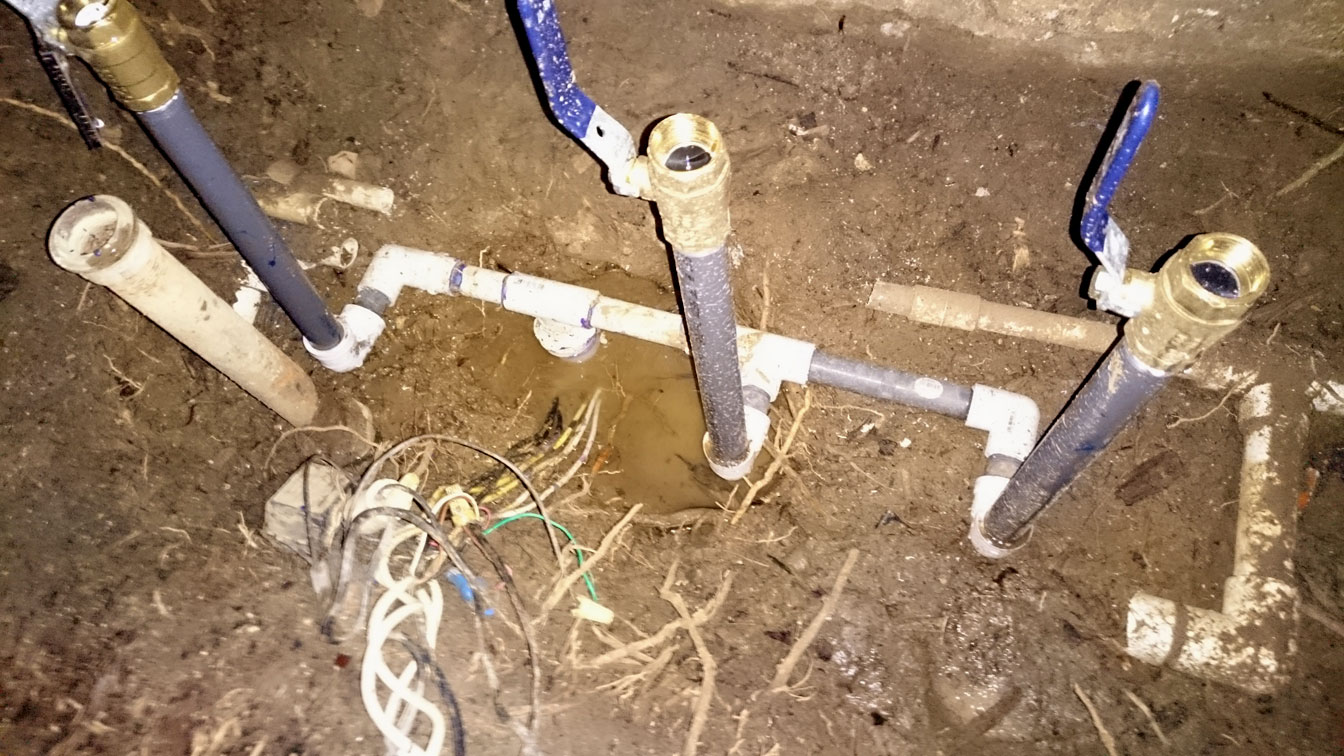I had to do a fix like this a few years ago, and I think I did okay on it, and improved with your help.
I have another similar, but a little more complex.
At which point is the water plumbing from curb to house best to then transition to junctions that
are not cemented together?
I haven't yet found a shutoff valve between curb and house, and sprinkler system seems to be in between.
So I have to shut off at the curb to deal with changes to the irrigation system.
I ended up epoxying this T, with a nipple internal, to the pipe coming up from below on the last fix -
Replaced the pipes with PVC after the photo.
http://www.gthomson.us/projects/landscaping/planter3/picc.jpg
http://www.gthomson.us/projects/landscaping/planter3/picd.jpg
I'm dealing with the same again, I think.
Broken nipple in a way that I can't attach anything to it, and everything beyond that is cemented towards
that T that goes down in the ground.
But this time that supply is for 3 valves, or maybe 4 with that offshoot pipe also tapped into it.
Is the best option to cut all the pipes over that T, and then bring it up above ground
- epoxy a 12" riser? - so I can put a shutoff valve there like I did in the previous fix, then take it back down and routed to wherever
needed for the valves?
My goal, I think, is to get a lever shutoff valve where that T is. Does that make sense? How best to do that?
http://www.gthomson.us/projects/landscaping/planter3/pica.jpg
http://www.gthomson.us/projects/landscaping/planter3/picb.jpg
Everything from the broken nipple to the T connection to the down spout is cemented...
I have another similar, but a little more complex.
At which point is the water plumbing from curb to house best to then transition to junctions that
are not cemented together?
I haven't yet found a shutoff valve between curb and house, and sprinkler system seems to be in between.
So I have to shut off at the curb to deal with changes to the irrigation system.
I ended up epoxying this T, with a nipple internal, to the pipe coming up from below on the last fix -
Replaced the pipes with PVC after the photo.
http://www.gthomson.us/projects/landscaping/planter3/picc.jpg
http://www.gthomson.us/projects/landscaping/planter3/picd.jpg
I'm dealing with the same again, I think.
Broken nipple in a way that I can't attach anything to it, and everything beyond that is cemented towards
that T that goes down in the ground.
But this time that supply is for 3 valves, or maybe 4 with that offshoot pipe also tapped into it.
Is the best option to cut all the pipes over that T, and then bring it up above ground
- epoxy a 12" riser? - so I can put a shutoff valve there like I did in the previous fix, then take it back down and routed to wherever
needed for the valves?
My goal, I think, is to get a lever shutoff valve where that T is. Does that make sense? How best to do that?
http://www.gthomson.us/projects/landscaping/planter3/pica.jpg
http://www.gthomson.us/projects/landscaping/planter3/picb.jpg
Everything from the broken nipple to the T connection to the down spout is cemented...





